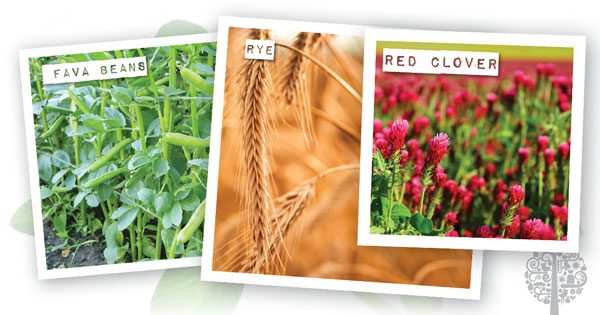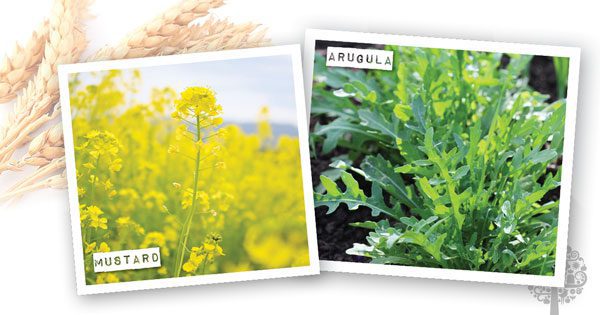Mastering the art of organic gardening involves more than merely growing without chemicals. To boost yields, provide plant nutrients, and control weeds, diseases, and pests naturally, one must add various techniques to their growing regimes. Think compost, companion planting, crop rotation, and cover crops.
Aptly named, cover crops are sown to cover the soil with plant growth, typically after primary food crops have been harvested and over the winter. Sow the seeds one month before the first frost for best results, and while the plants are still alive, cut them down and mix them into the soil as green manure.
Cover crops include legumes, such as pea and hairy vetch, which fix nitrogen as they grow. Grassy plants can also be used, like oats and barley. Other examples of cover crops include:
- Annual rye
- Arugula
- Buckwheat
- Fava beans
- Forage radish
- Red clover
- Mustard
- Winter rye
- Wheat
Planting cover crops is one of the cornerstones of organic gardening for many reasons. Beyond deterring erosion and weeds, cover crops help protect soil structure by building nitrogen and organic matter levels. They also significantly improve the ground’s water retention capabilities, and have even been found to sequester carbon and reduce global warming!

Check out the Kiss The Ground documentary on Netflix for a look at how cover crops have helped one American farmer thrive.
A recent study finds cover crops are especially helpful in semi-arid climates. Researchers from New Mexico State University and the United States Department of Agriculture say the plants led to better soil health in the Southern High Plains.
“There was a lot of skepticism on the effectiveness of cover cropping in the hot, dry environment of the southern High Plains,” says Rajan Ghimire, a researcher at New Mexico State University. “Our research shows that cover crops increased the biological health of soils in the study area within two years.”

The study was carried out over two growing seasons in Clovis, New Mexico, 200 miles east of Albuquerque. The area doesn’t get a lot of rain, but when it comes, the storms are intense. Coupled with strong winds, severe soil erosion and topsoil depletion are common.
Researchers identified healthy soils by measuring their carbon dioxide emissions. They found the emissions were higher in test plots with cover crops than those without, a good indication that soil microbes were thriving down below.
“The higher the biological activity is in soils, the greater the carbon dioxide emissions,” explains Ghimire.
It’s important to note that carbon dioxide is a greenhouse gas, and if left unchecked, the soil’s emissions can be problematic. But Mother Nature works in mysterious ways. Cover crops work overtime by absorbing the CO2 from the atmosphere and storing it in the soil.
Cover crops help with soil carbon storage because they are largely made of carbon, which decomposes into organic matter. They are also a source of food for soil microbes such as fungi, which are linked to even more carbon storage.
No matter what kind of climate you’re growing in, it’s essential to find the right balance when planting cover crops. It is recommended to mix legumes with grasses to increase both soil carbon and nitrogen while minimizing the release of carbon dioxide.
The researchers in this study say there is still so much to learn about cover crops and hope to continue this experiment long-term. However, for now, planting cover crops remain a crucial element in every organic garden, no matter where you live in the world.
Sources:
Practical Organic Gardening: The No-Nonsense Guide To Growing Naturally (Mark Highland) Cool Springs Press.
Gardening Complete: How To Best Grow Vegetables, Flowers, And Other Outdoor Plants (The authors of Cool Spring Press) Cool Springs Press.
Curious – I have approx 150 sq ft of backyard vegetable garden. Id like to check out crop cover. What wld you suggest as a crop. I live in Toronto Canada. Where can I learn more about planting times after harvest etc.? Thanks!!